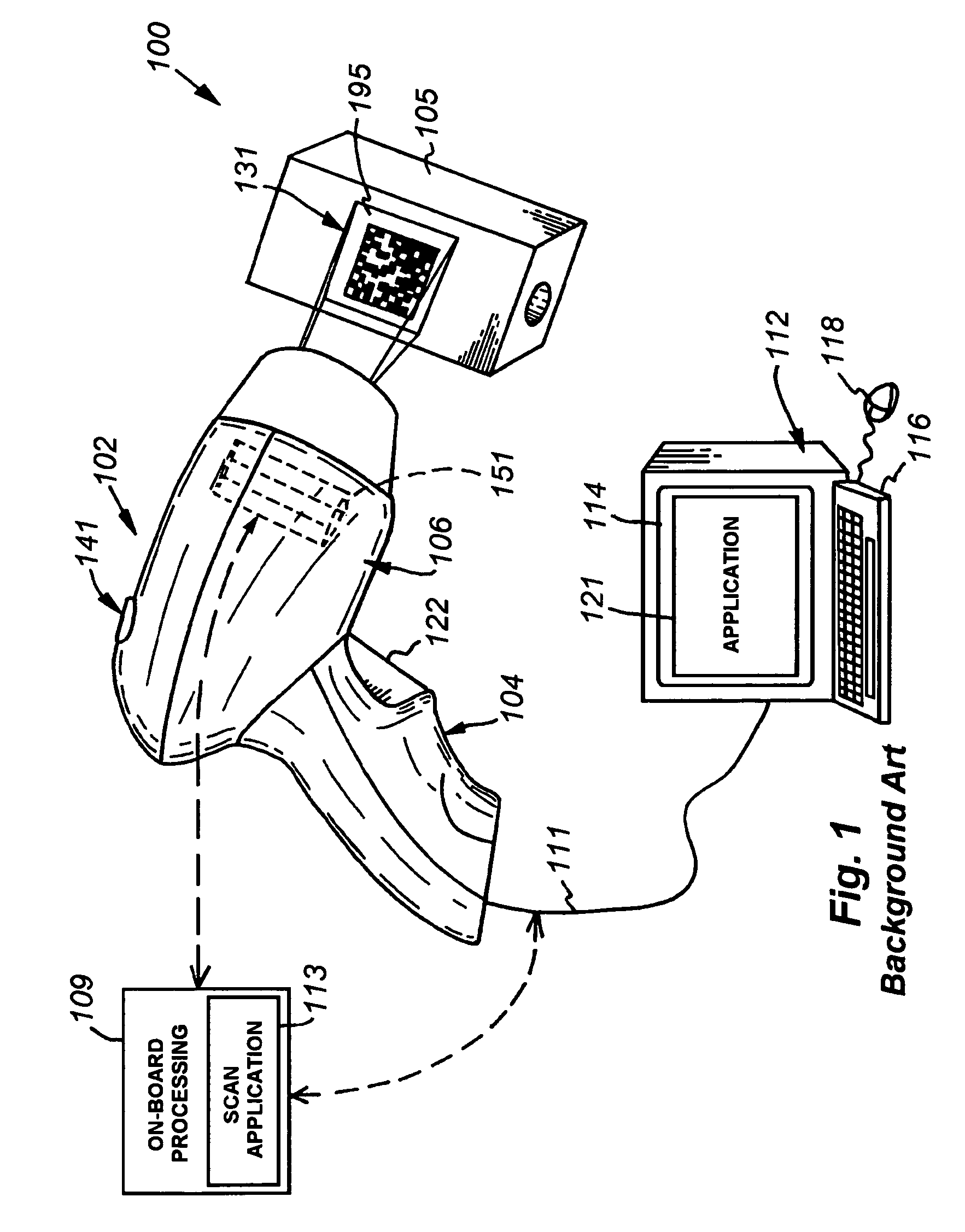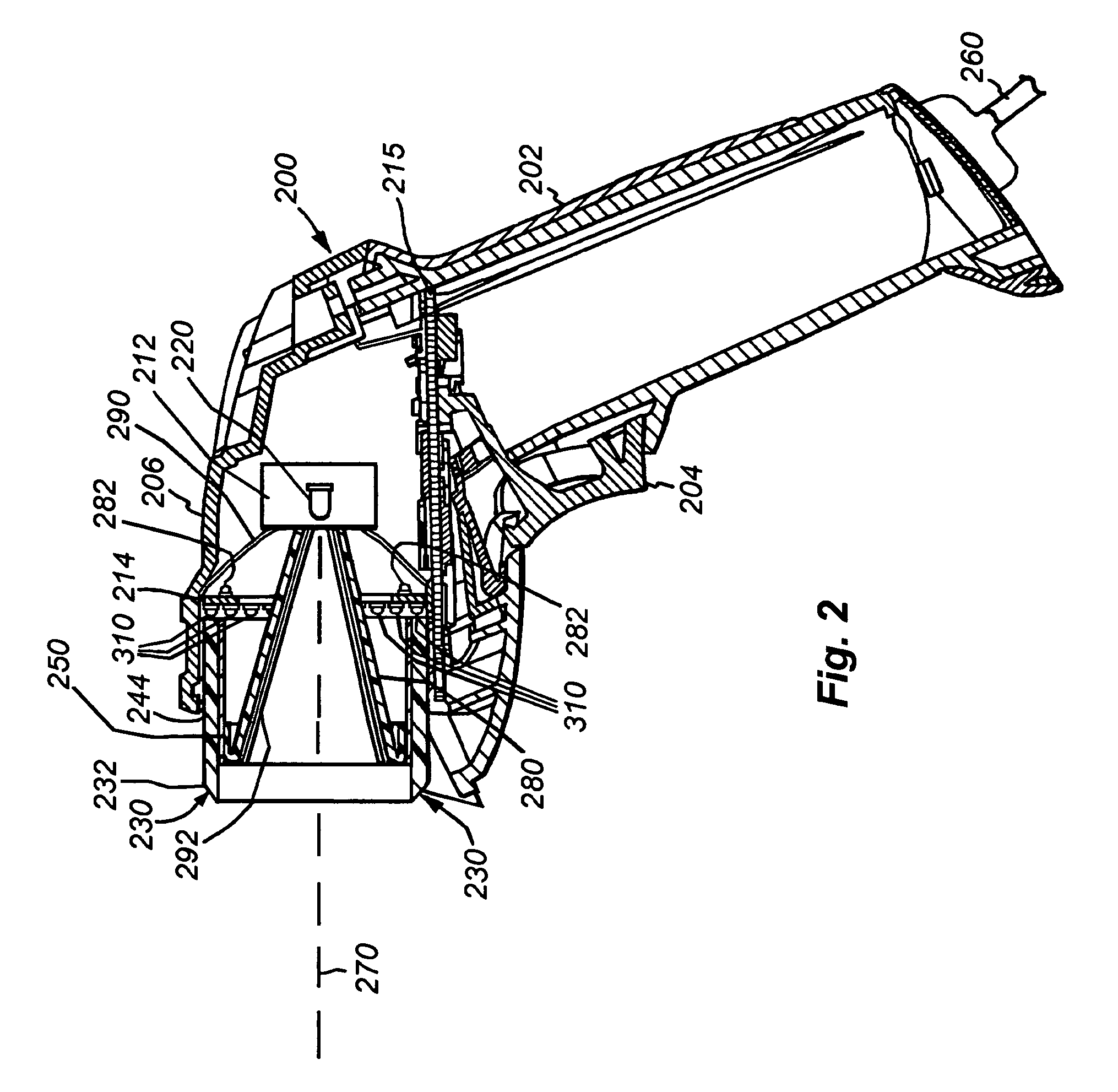Integrated illumination assembly for symbology reader
a symbology reader and integrated technology, applied in the field of illumination, can solve the problems of inability to intuitively choose bright field, dark field, direct or diffuse light, and use of highly reflective bright field illumination, so as to improve illumination performance, increase the durability of light pipes, and increase the effect of weight or siz
- Summary
- Abstract
- Description
- Claims
- Application Information
AI Technical Summary
Benefits of technology
Problems solved by technology
Method used
Image
Examples
Embodiment Construction
[0053]FIG. 2 shows a cross sectional side view of an illustrative embodiment of the reader 200 according to the present invention. The imager 212 and an illumination board 214 are positioned on a shock-resistant mounting (not shown) within the housing 206. In this exemplary embodiment, the processor module and related functional electronic components are mounted on a processor board 215. The grip portion 202 and the trigger 204 are functionally cooperative with the housing 206 and components of the processor board 215. The grip portion 206 includes a conveniently placed trigger 204 that can be actuated by a finger of the user to initiate the image acquisition and decoding function. More particularly, pressing the trigger causes all types and colors of illumination (as described further below) to be simultaneously projected onto the subject of interest, and also causes corresponding acquisition of an image by the imager.
[0054]With brief reference to the illuminator, the illumination ...
PUM
 Login to View More
Login to View More Abstract
Description
Claims
Application Information
 Login to View More
Login to View More - R&D
- Intellectual Property
- Life Sciences
- Materials
- Tech Scout
- Unparalleled Data Quality
- Higher Quality Content
- 60% Fewer Hallucinations
Browse by: Latest US Patents, China's latest patents, Technical Efficacy Thesaurus, Application Domain, Technology Topic, Popular Technical Reports.
© 2025 PatSnap. All rights reserved.Legal|Privacy policy|Modern Slavery Act Transparency Statement|Sitemap|About US| Contact US: help@patsnap.com



